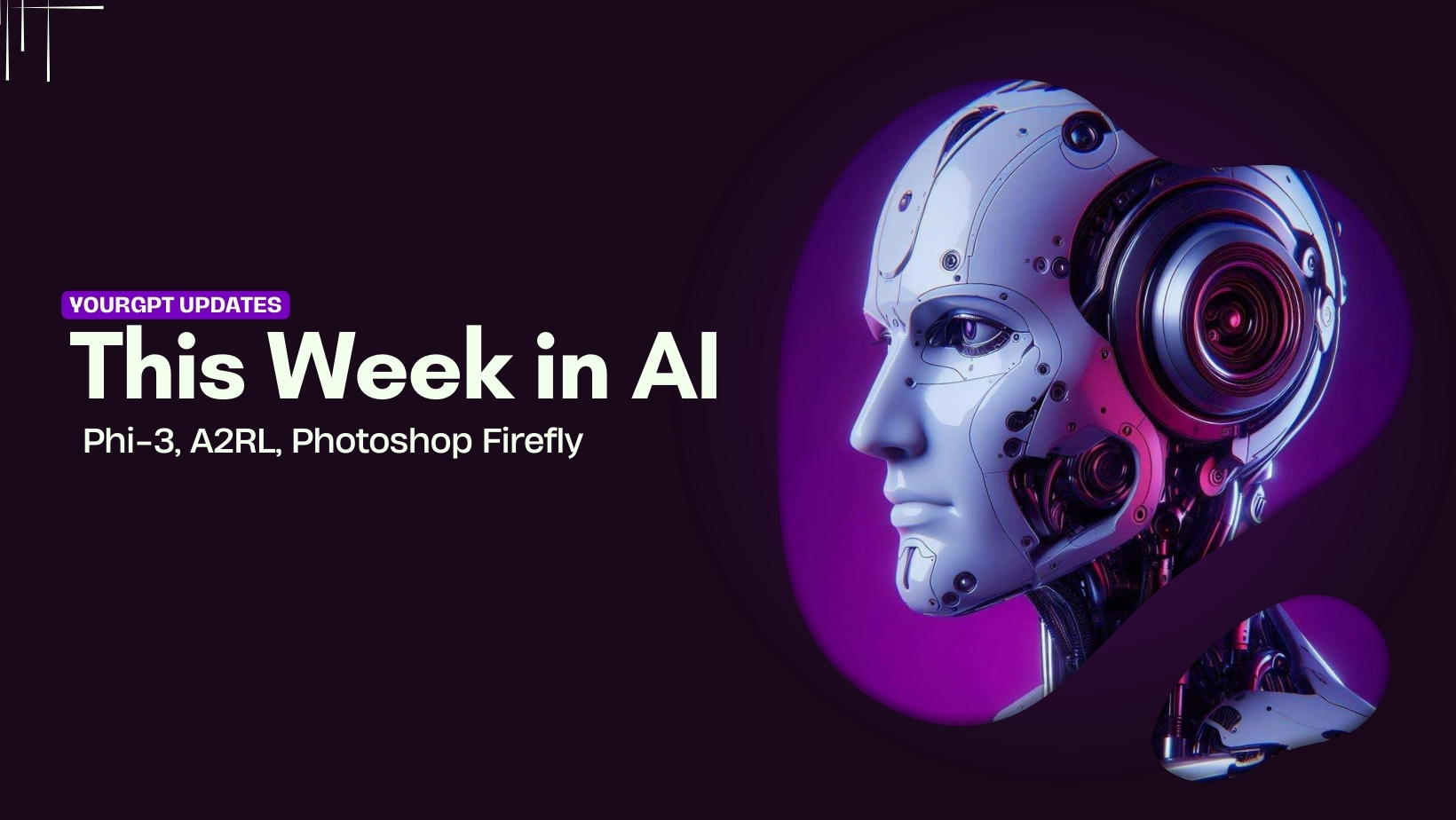This Week in AI | Week 11


This week in AI, we have updates First from Microsoft, who launched there smallest AI model, the Phi 3. We will also explore the world of autonomous racing and its challenges.Finally, Adobe has introduced some new AI tools that can help make creative work easier and more fun! Let’s check out these highlights together.
Microsoft launched the Phi-3, its latest addition to the lightweight AI model lineup, marking significant advancements in compact AI technology.
Key Features of Phi-3 Mini:

Microsoft’s launch of Phi-3 highlights the company’s dedication to creating AI solutions that are both accessible and efficient. This new model is a step towards more compact and powerful AI tools.
The inaugural race of the Abu Dhabi Autonomous Racing League (A2RL) unfolds with both excitement and challenges, shedding light on the evolving landscape of autonomous vehicle technology.
Key Takeaways from A2RL:
A2RL’s debut signifies the ongoing evolution of autonomous vehicle technology, with each race serving as a milestone in the journey towards enhanced performance and reliability.
Adobe introduces Firefly, a new generation of generative AI tools integrated into Photoshop, aimed at streamlining creative workflows and empowering users with enhanced control over design elements.
Key Features of Firefly:

Adobe’s Firefly model is an advancement in AI-assisted designing tools, allowing users to easily and accurately express their ideas through intuitive features.
AI continues to be integrated into various fields, bringing potential improvements in efficiency, creativity, and performance to multiple industries.
In Week 11 of AI, we see progress in several areas. There are new developments in small but powerful AI models, advancements in autonomous racing, and tools that combine AI with designing tools. As AI becomes part of more industries, it will continue to improve how we work and interact with technology.

Grok 4 is xAI’s most advanced large language model, representing a step change from Grok 3. With a 130K+ context window, built-in coding support, and multimodal capabilities, Grok 4 is designed for users who demand both reasoning and performance. If you’re wondering what Grok 4 offers, how it differs from previous versions, and how you […]


OpenAI officially launched GPT-5 on August 7, 2025 during a livestream event, marking one of the most significant AI releases since GPT-4. This unified system combines advanced reasoning capabilities with multimodal processing and introduces a companion family of open-weight models called GPT-OSS. If you are evaluating GPT-5 for your business, comparing it to GPT-4.1, or […]


In 2025, artificial intelligence is a core driver of business growth. Leading companies are using AI to power customer support, automate content, improving operations, and much more. But success with AI doesn’t come from picking the most popular model. It comes from selecting the option that best aligns your business goals and needs. Today, the […]


You’ve seen it on X, heard it on podcasts, maybe even scrolled past a LinkedIn post calling it the future—“Vibe Marketing.” Yes, the term is everywhere. But beneath the noise, there’s a real shift happening. Vibe Marketing is how today’s AI-native teams run fast, test more, and get results without relying on bloated processes or […]


You describe what you want. The AI builds it for you. No syntax, no setup, no code. That’s how modern software is getting built in 2025. For decades, building software meant writing code and hiring developers. But AI is changing that fast. Today, anyone—regardless of technical background—can build powerful tools just by giving clear instructions. […]

OpenAI just dropped a major update for AI developers. Swarm was OpenAI’s first framework for multi-agent collaboration. It enabled AI agents to work together but required manual configuration, custom logic, and had no built-in debugging or scalability support. This made it difficult to deploy and scale AI agents efficiently. Now, OpenAI has introduced the Agents […]
